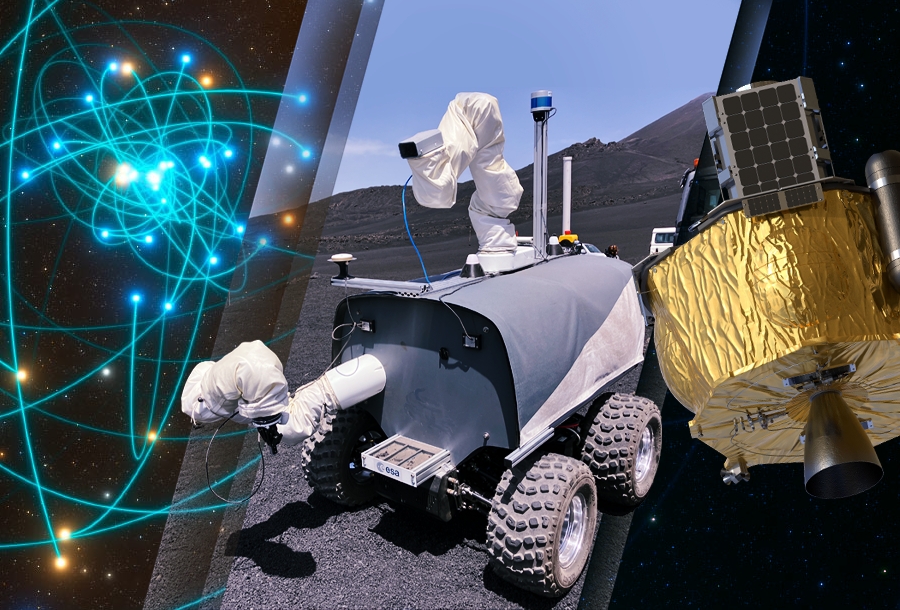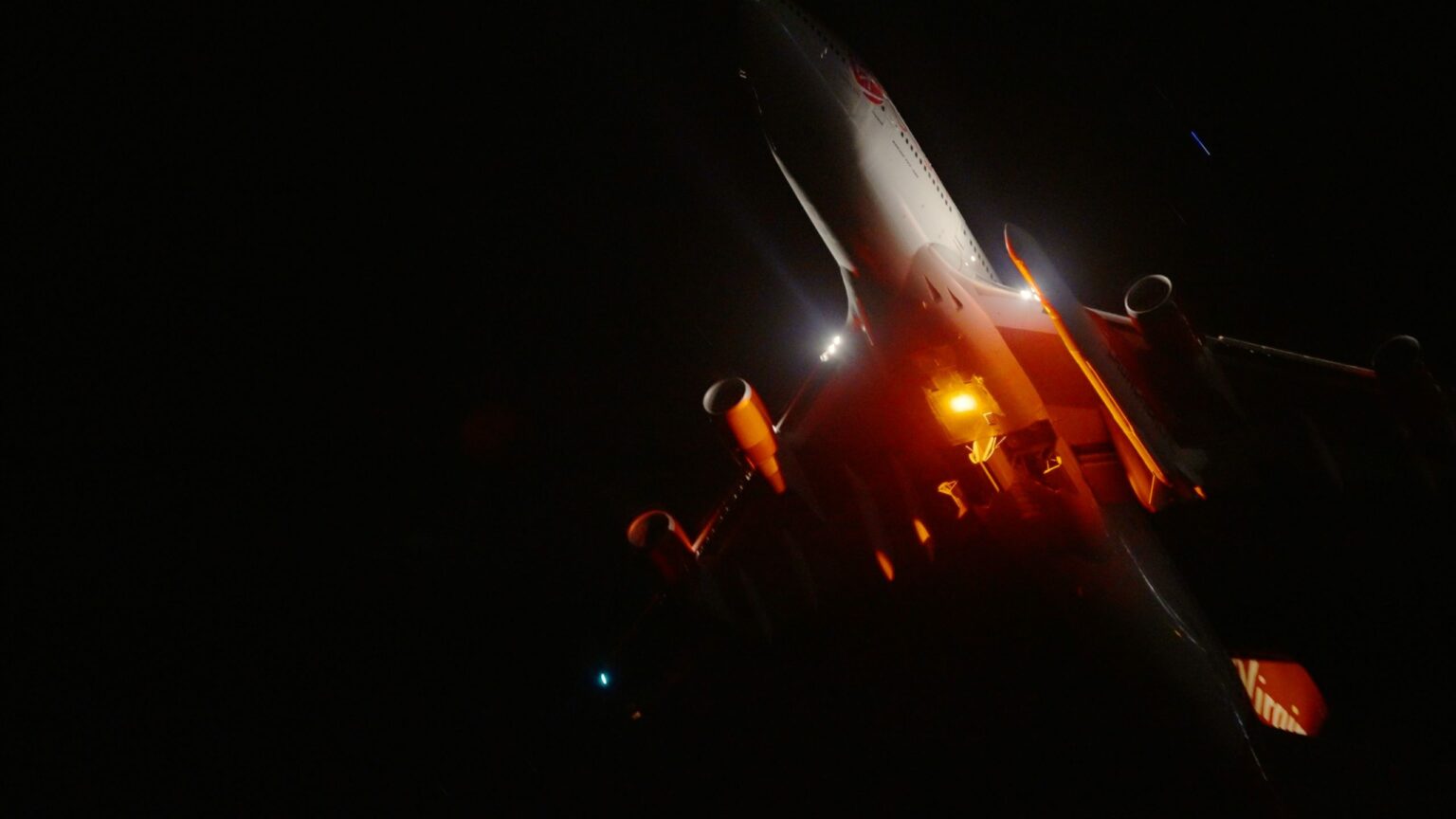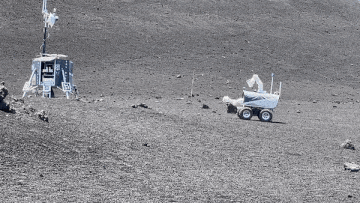Selection of the most interesting space news for breakfast: Astronomers discovered a star rapidly orbiting a black hole. A massive crater has formed on the asteroid Bennu due to a tiny rock, and scientists have completed testing rovers on Mount Etna.

NASA lost contact with the CAPSTONE satellite
NASA’s deep space communications network has lost contact with the CAPSTONE satellite. This happened a day after the device separated from the Lunar Photon platform and went on an independent journey to the Moon.
For the first time, problems with CAPSTONE were reported by radio amateurs who discovered the absence of outgoing transmissions from the satellite. Soon NASA confirmed that it really stopped communicating with the Earth. It is worth noting that despite the fact that the construction of the satellite was funded by NASA, the Advanced Space startup is engaged in mission management. Currently, its engineers are analyzing the latest CAPSTONE telemetry, trying to figure out the cause of the failure.
NASA resumes communication with CAPSTONE after sudden shutdown
On the evening of July 6, NASA announced that the team had resumed the lost connection with CAPSTONE. Communication with the spacecraft was briefly lost after separation from the Lunar Photon platform before the start of the sending maneuver to the Moon.
China’s new radio telescope will have dangerous solar eruptions in its gaze
Work on what will be the world’s largest circular array for solar radio imaging is expected to be finished by the end of the year, supervisor says. It is being built on the Tibetan Plateau in Sichuan province and will be used alongside another solar telescope being assembled in Inner Mongolia.
The Daocheng Solar Radio Telescope (DSRT) is being built at a site high up on the Tibetan Plateau and will have 313 dishes, each of them 6 metres (19.7 feet) across.
It will be used to study dangerous solar eruptions known as coronal mass ejections – when magnetised plasma escapes from the sun’s upper atmosphere and propagates in the interplanetary space.
Star orbiting a black hole in the shortest time
Astronomers have discovered a star with a speed of 8 thousand km/s. It orbits the supermassive black hole Sagittarius A*. The newly discovered luminary makes one revolution around it in just 4 years.
Scientists from the Universities of Cologne and Masaryk in Brno reported the discovery of the fastest star in the Milky Way galaxy. It is located in the center of the Milky Way and orbits the supermassive black hole Sagittarius A*.
Market News

Successful launch of Virgin Orbit and ULA over the holiday weekend
Both Virgin Orbit and United Launch Alliance executed successful launches during the holiday weekend serving U.S. Department of Defense customers.
Virgin Orbit’s fourth mission, Straight Up, carried seven satellites to Low-Earth Orbit (LEO) for the U.S. Space Force (USSF) late Friday in California. The launch was through the Rocket Systems Launch Program, with payloads provided by the Department of Defense Space Test Program (STP) for multiple government agencies.
SatSure Forms KaleidEO to Build Optical Payloads In-House
Space data and analytics company SatSure is launching a new subsidiary, KaleidEO, to build optical payloads to collect satellite imagery. It will build high resolution optical payloads which will be integrated on four satellites that will be sourced commercially. The satellites will produce raw imagery, processed data and insights from the payload’s Edge processing unit, hosting SatSure’s proprietary AI/ML algorithms. The company plans to launch four satellites providing near 1-meter spatial resolution imagery at the end of 2024.
New launch vehicles set for test flights from China’s Jiuquan spaceport
Newly-developed orbital and suborbital launch vehicles are being readied for test flights at the Jiuquan spaceport as China’s efforts to foster a commercial space sector advance.
Landspace, a Beijing-based launch startup, is working towards the launch of its Zhuque-2, methane and liquid oxygen rocket. The mission, expected in the near future, will represent the first launch of a liquid propellant launch vehicle by China’s nascent commercial space sector.
L3Harris makes strategic investment in Mynaric
L3Harris is making a strategic investment in laser communications company Mynaric with plans to make increased use of that technology for space and other applications.
The companies announced July 5 that L3Harris will invest 11.2 million euros ($11.4 million) into Mynaric, taking a 7.2% stake in the Munich-based company. L3Harris, which uses Mynaric’s HAWK terminals for airborne laser communications, said it would expand its use of Mynaric systems for other applications, including space.
Interesting

Researchers completed testing of rovers on Mount Etna
Testing took place on the volcanic slopes of Mount Etna in Sicily, where the soil is similar to lunar regolith. This concluding part of ESA’s ‘Analog-1’ project took place as part of a larger multi-agency, multi-rover campaign, organised by the DLR German Aerospace Center. The Autonomous Robotic Networks to Help Modern Societies, ARCHES, project probe the ability of autonomous robots to collaborate and share data on a networked basis.
James Webb Space Telescope will watch smashing worlds in high definition
Researchers are looking forward to a glimpse of colliding worlds in action from NASA’s cutting-edge space observatory.
After the James Webb Space Telescope finishes its commissioning period and releases its first operational images on July 12, the observatory will dive into science in earnest. And one of the telescope’s first-year investigations will include a close-up view of the strange neighborhood of Beta Pictoris. It is only 63 light-years away from us and is surrounded by a dusty disk full of debris left after its formation.
Asteroid Bennu sports landslide and massive crater from tiny space rock
The impact of a tiny body on the asteroid Bennu caused a rock slide that revealed the surface properties of rock-pile asteroids. Using images collected by NASA’s OSIRIS-REx spacecraft, researchers have traced the progress of a landslide on the asteroid Bennu that resulted from an impact with another object.
The team determined that the way this “deep-space landslide” progressed would be possible only if Bennu had certain properties at its surface — namely, dry dust particles with little or no cohesion. The discovery gives scientists better insight into how rubble-pile asteroids — those composed of a loose collection of smaller rocks and dust and held together by gravity — take a hit.
Follow us on Twitter to get the most interesting space news in time
https://twitter.com/ust_magazine

